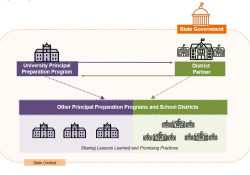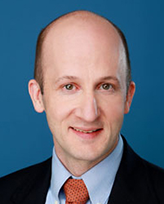By Elizabeth Foster and Isabel Sawyer
Imagine if all educators were supported over their careers by a “nested” professional learning system in which there was a pathway for professional growth connecting individual pursuits to priorities at the district and state policy levels. Professional learning experiences would address individual and collective educator needs, build on previous experiences, and be based on a shared understanding that educator learning must be relevant and meaningful in order to impact student learning. Depending on priorities, the throughline might be a focus on closing pedagogical content gaps or on ensuring successful implementation of curriculum by leveraging professional learning communities. That throughline is then supported by connected and complementary structures.
This vision of a supportive system of professional learning is one that we have been talking about a great deal during our involvement in an initiative led by the Council of Chief State School Officers (CCSSO). This initiative is focused on competency-based professional learning—the idea that educators progress along career pathways by building knowledge and skills. As we’ve discussed structures such as licensure and relicensure, standards, and microcredentials, we have consistently thought about how important it is that any initiatives designed to help educators learn and grow exist within a system of supports. For instance, one of the products of this CCSSO initiative is a set of design principles for microcredentials. We believe the microcredential is an innovative way to demonstrate proficiency of a discrete skill, and a strategy that is best leveraged by a system of aligned policies and structures.
Ideally, an educator’s professional learning is a journey of continuous improvement and development throughout his or her career, supported by a coherent system of structures in their district, network/region, and state (see Figure 1 below). When the pathway of professional learning supports is connected and aligned, educators experience ongoing, meaningful professional growth that results in improved instructional practice and better, more equitable outcomes for students.

Consider Randall, a young teacher just beginning his career. He is focused on getting on solid footing in the classroom and he is eager to learn and grow as a professional. His priority is his relationship with his students—this is of the utmost importance and at the center of everything he does as a novice teacher (hence it is at the center of our infographic!). Randall may not be thinking about how important it is that his professional learning experiences are coherent and aligned across the system. But in order to grow as an educator, Randall will need to have a range of experiences—some that he seeks out based on his students’ needs and his own interests, some that the district prioritizes in order to implement a new curriculum or address a persistent achievement gap, some that address state licensing requirements or a new state priority.
Here is what would happen for Randall in an ideal system: Randall participates in a professional learning community at his school where he can work and learn alongside some knowledgeable veteran teachers (and across the experience continuum) as well as colleagues with different content expertise. Randall and his colleagues support each other in an ongoing collaborative learning experience, guided by protocols and skilled facilitation that focus their collaboration on improving their practice and student outcomes.
Randall also has access to an instructional coach who engages with him over several inquiry cycles focused on instructional content and artifacts related to his students’ progress toward college and career-ready standards. His principal offers him targeted support and information about school priorities during weekly meetings. Since the district has selected a high-quality educative curriculum, there are protocols and guidance embedded in the resources he is using for the classroom. Professional learning for the district is often done in collaboration with regional providers who emphasize evidence-based professional learning strategies across a range of content areas and topics.
Each level of the system nests within the next: professional learning communities within school, school within district, district within region, region within state. In states that have adopted or adapted the Learning Forward Standards for Professional Learning, this is all further nested in an international set of research-based standards for professional learning that describe the conditions for effective professional learning.
As organizations in the professional learning space, Collaborative Classroom and Learning Forward know that connection and alignment are important, and we work hard to ensure that our efforts support and complement each other in the districts and schools where we meet. We believe that in order for educators like Randall to be engaged and learning along a professional trajectory, the structures that he depends on to build his knowledge and skills must work coherently. Together, the systems can help educators understand where their professional learning efforts have paid off, and where more work needs to be done to meet teachers’ and students’ needs and goals. Such a responsive, coherent, supportive system is what our organizations are working toward every day in order to achieve the promise of excellence and equity in teaching and learning.
Elizabeth Foster is vice president of research & standards at Learning Forward. Elizabeth works to promote the adoption and implementation of the Learning Forward Standards for Professional Learning, better understand the impact of professional learning strategies, and contribute to policy and strategy approaches.
Isabel Sawyer is a Senior Director at the Center for the Collaborative Classroom. Previously Isabel worked as the Professional Development and Instructional Coach Lead for Albemarle County Public Schools. She serves on the Virginia Learning Forward Board.




![Poil blog v1[1]](https://learningforward.org/wp-content/uploads/bb-plugin/cache/poil-blog-v11-custom_crop.jpg)




